Failure is often feared, avoided, and even stigmatized. Well, to most, but not for me. My take is—what if failure was the quickest path to success? Historically, those who have dared to fail—and fail fast—have paved the way for some of the most groundbreaking innovations. By embracing failure as a stepping stone, they learned, adapted, and ultimately triumphed.
Elon Musk and SpaceX (yes, let’s)
Elon Musk’s journey with SpaceX is a modern-day example of the power of failing fast. When the company was founded in 2002, Musk’s vision of making space travel affordable and eventually colonizing Mars seemed like science fiction. The first three SpaceX rocket launches failed spectacularly, with millions of dollars lost and the future of the company hanging by a thread.
Instead of giving up, Musk treated each failure as an opportunity to learn and iterate. By the fourth launch, SpaceX successfully reached orbit, securing critical NASA contracts and solidifying its reputation as a leader in space exploration. Today, SpaceX’s reusable rocket technology is revolutionizing the aerospace industry, all because Musk embraced failure as a necessary part of innovation.
Musk’s approach underscores the importance of rapid iteration. He wasn’t afraid to test ideas, make mistakes, and pivot quickly. This mindset not only sped up SpaceX’s journey to success but also highlighted a universal truth: the faster you fail, the sooner you succeed.
Why Failing Fast Matters
In today’s fast-paced world, speed is everything. Markets evolve, trends shift, and opportunities come and go. By failing fast, you gain the insights needed to refine your approach and stay ahead of the curve. Instead of letting fear hold you back, you turn every failure into a building block for future success.
3 Ways to Fail Fast and Learn Faster
1. Start Small, Test Big Ideas
Launching a full-scale project before testing the concept is risky. Instead, start with a minimum viable product (MVP). Whether it’s a prototype, a small-scale pilot, or a simple survey, this approach allows you to test your idea with minimal investment. Gather feedback, identify flaws, and iterate quickly. This is why I always launch websites, companies, and ideas at the very early stages—before the site is fully done or thought through, etc.
Before Airbnb became a global phenomenon, its founders tested the idea by renting out air mattresses in their living room to conference attendees. This small experiment validated their concept without significant upfront costs.
2. Seek Feedback Early and Often
Don’t wait until you’ve perfected your product or service to seek feedback. Involve potential customers, colleagues, and mentors from the outset. Constructive criticism can save you from pursuing dead ends and highlight opportunities for improvement.
I never, ever wait to perfect, because perfect doesn’t even exist as an entrepreneur. You must continue to evolve, adapt, and pivot. I create a feedback loop with my audiences without them even realizing it. I post to my personal social pages, send some texts out, and make calls to have colleagues, clients, etc., check out my latest launch. The more insights I gather, the faster I can adjust.
3. Adopt a Growth Mindset
Embrace failure as a learning opportunity rather than a setback. Analyze what went wrong, identify key lessons, and apply them to your next attempt. A growth mindset helps you see failure not as an endpoint but as part of the journey.
A growth mindset has been my key to ongoing successes and how I push through failures or mistakes as quickly as possible. I am also not worried about being embarrassed when I launch something that isn’t ready or not fully baked. I embrace the embarrassment.
I have had many people throughout my career say to me—”Starr, you are always working on new projects and launching new brands, stores, online companies, etc. Do you ever rest? Or better yet—do you ever just focus on 1-2 things at a time?” My answer to this is “NOPE.”
This is how I get to success and beautiful revenue. After every failure, I conduct a post-mortem. I ask myself: What worked? What didn’t? What can I do differently next time?
Real-Time Example: Testing LIVE Social Selling
Right now, I’m testing all the social live-selling apps like Whatnot and TikTok, moving through them as quickly as possible to crack the code. I’m hosting live events where sometimes two people show up (my aunt and myself), and other times 50 people show up. I mostly have no idea what I’m doing—but I do it anyway. That’s my motto.
A great book that has shaped my approach is Feel the Fear and Do It Anyway by Dr. Susan Jeffers. It’s a game-changer for anyone looking to embrace uncertainty and take action despite fear.
Turning Failure into Success
Failing fast is not about being reckless or cavalier. It’s about testing, learning, and adapting quickly. By viewing failure as a necessary part of growth, you’ll not only overcome obstacles but also build resilience, creativity, and confidence.
So, take a page from my book. Experiment, fail, learn, and repeat. The sooner you embrace failure, the faster you’ll achieve your next big success. My journey has shown me that the beauty of failing fast is that it brings you closer to who you’re meant to be and what you’re meant to create.
What will you fail fast at today? For me, I’m launching my latest website—www.90daystorevenue.com. At the time of this blog post, you might notice there’s still copy to be written, a video and images waiting to be uploaded, and forms that need programming. But here’s the thing—I’m asking you to hop on over and check it out anyway. Why? Because failing fast means taking action before everything is ready or fully baked. Your visit and feedback are part of the process, and for that, I’m truly grateful.
Starr Hall – Publicist

